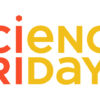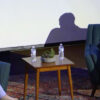Giorgio Quer et al. –
The first capture of the electrical activity of the heart—the PQRST complex—was done by Willem Einthoven in 1895, using a 600-pound machine and five skilled operators, with a simple request for patients to place their hands and one foot inside buckets filled with an electrolyte solution. Eventually, the 12-lead electrocardiogram (ECG) in hospital and clinic settings evolved, requiring a big machine on wheels with multiple cables for each limb and across the chest. Today, by touching a sensor with our fingers and the left leg, forming Einthoven’s triangle, we can instantly record a high-quality six-lead ECG to a smartphone. This technology will make it possible to easily monitor extensive heart electrical activity virtually anywhere, at any time, and as frequently as desired. With this new capability comes daunting challenges in the accurate interpretation and management of data.
Read the full article in The Lancet.





